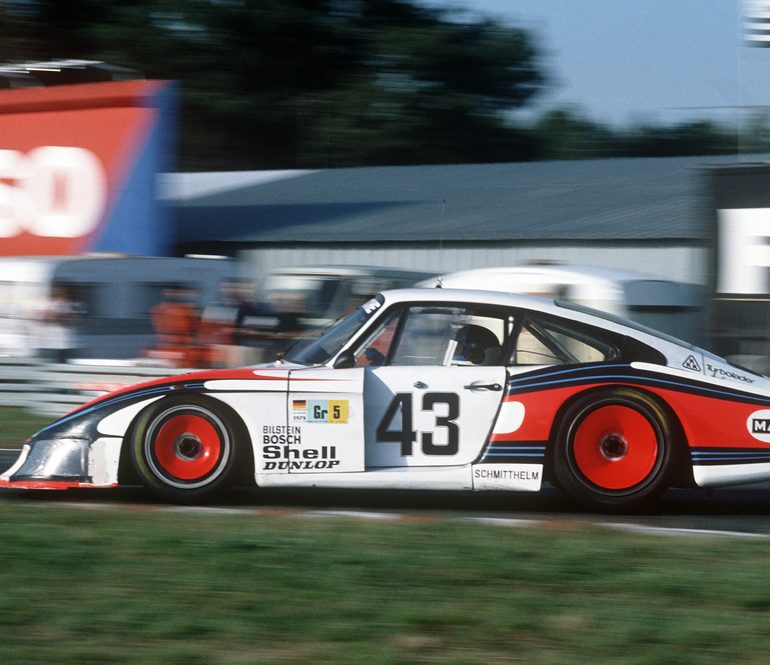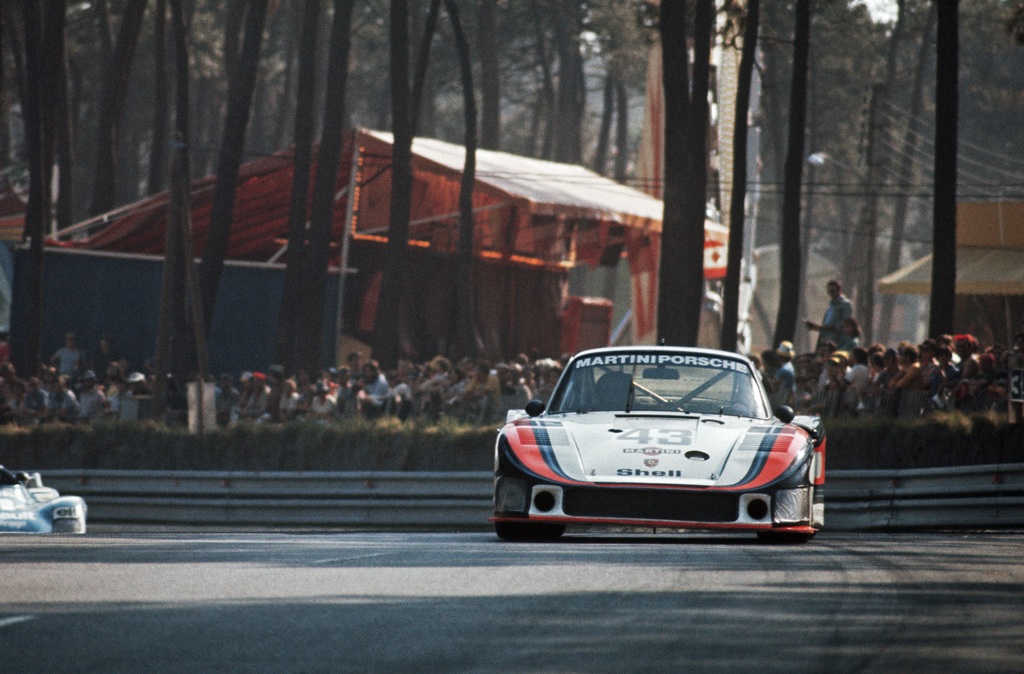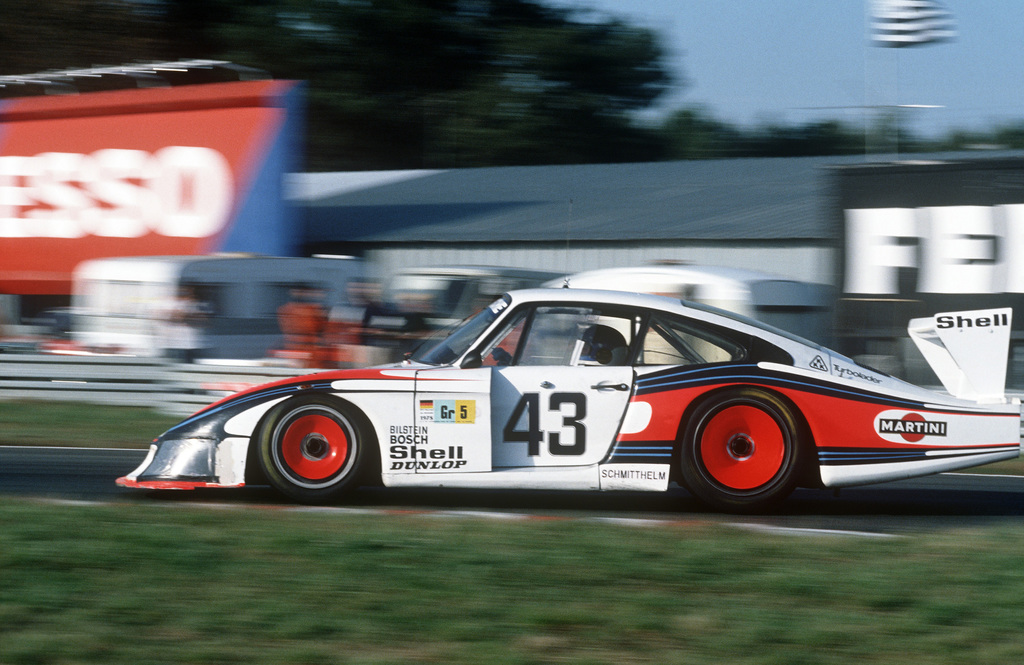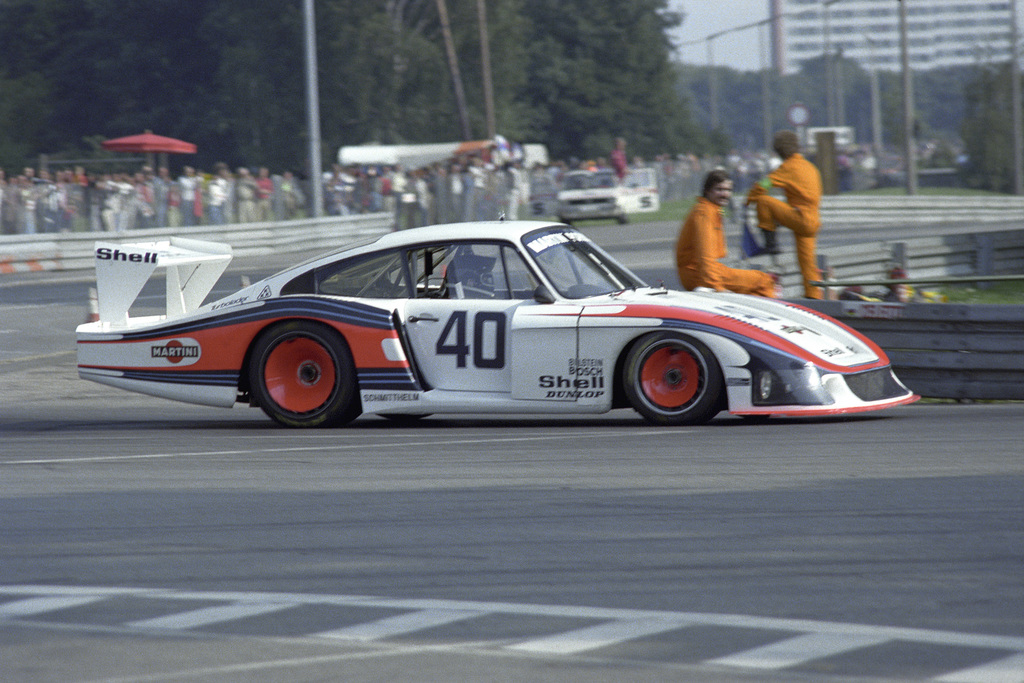1978 Porsche 935/78 ‘Moby Dick’
The 935/78 was the ultimate expression of the 911 factory race car before Porsche officially withdrew from motor sport. Raced under the Group 5 silhouette series, great liberties were taken with the design and the result was nicknamed ‘Moby Dick’ for its large size and huge overhangs.
The 935/78 was built under Porsche’s Chief Racing by Norbert Singer for high speeds at Le Mans. Due to the advanced shape of the car 227 mph or 366 km/h was possible. To achieve this, both the front and rear end were redesigned with detachable panels that could reveal what little was left of the production unitary steel monocoque with new aluminum sub-frames. The design even went as far as replacing floor and lowering the car 75 mm.
The engine had to use production car internals, but the cylinder-heads were open for modification. For the first time in the history of the 911 the engine came with water-cooled cylinder heads featuring four valves per cylinder. Maximum output of the turbocharged 3.2-litre six-cylinder with four overhead camshafts was 845 bhp at 1.7 bar of boost. At the standard 1.5 bar, 750 bhp was possible.
The rear end of the car was completely new. Radiators that cooled the cylinder heads were mounted just ahead of the rear wheels and a massive adjustable rear wing was fitted above the engine.
With a firm eye on Le Mans, Porsche sat out most rounds of the Championship except the Silverstone 6 Hours. There, Jochen Mass and Jackie Ickx won outright with a large margin over the nearest competition.
At Le Mans, only a single car was entered for the 24-hour race. It set the fastest lap among several specially-built prototypes. Rolf Stommelen and Manfred Schurti did the best they could despite engine troubles and brought the car home to eight overall.
Porsche used the car only twice more before retiring it as a permanent fixture in their Museum. In later years Reinhold Joest and Kremer each made their own versions of the Moby using the factory blueprints.
In Detail
| type | Racing Car |
| built at | Weissach, Germany |
| engineers | Norbert Singer |
| production | 2 |
| engine | Type 935/71 Boxer-6 |
| position | Rear, Longitudinal |
| aspiration | Twin KKK Turbochargers |
| block material | Aluminum |
| valvetrain | 4 Valves per Cyl |
| fuel feed | Bosch Fuel Injection |
| displacement | 3211 cc / 195.95 in³ |
| bore | 95.8 mm / 3.8 in |
| stroke | 74.4 mm / 2.9 in |
| compression | 7.0:1 |
| power | 630.1 kw / 845 bhp @ 8200 rpm |
| specific output | 263.16 bhp per litre |
| bhp/weight | 824.39 bhp per tonne |
| torque | 784 nm / 578.2 ft lbs @ 6600 rpm |
| body / frame | Steel Monocoque with Fibreglass Panels, Aluminum Subframes |
| front brakes | Ventilated & Cross-Drilled Discs |
| rear brakes | Ventilated & Cross-Drilled Discs |
| steering | Rack & Pinion |
| f suspension | McPherson Struts |
| r suspension | Semi-Trailing Arms |
| curb weight | 1025 kg / 2260 lbs |
| wheelbase | 2279 mm / 89.7 in |
| front track | 1624 mm / 63.9 in |
| rear track | 1624 mm / 63.9 in |
| length | 4890 mm / 192.5 in |
| width | 1990 mm / 78.3 in |
| height | 1200 mm / 47.2 in |
| transmission | Type 930/50 4-Speed Manual |
| top speed | ~366 kph / 227.29 mph |
| 0 – 60 mph | ~2.6 seconds |







